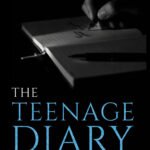One of the arch gordian knots of the applied science of Humanities is the poised implementation of an interim medium. In the age long history of Liberal Arts, many innovations and discoveries were made, exercised, experimented, and explored by the newbies, veterans and the master hands and that transformatory journey of visual transparency has been coined as cinema. Many films are made that had unfolded the stationery couch through an extended vision of cinematic text. The narratives of the pages have been pitchforked to life, making it an experience even for the terminal groundlings.
Bria MC Farlane in her celebrated book Novel to Film : An IntroductiontotheTheoryof Adaptation(ClarendonPress,1996,Oxford) had stated:
“If film did not grow out of literature, it grew towards it; and what novels and film most strikingly have in common is the potential and propensity for narrative.”
The intertwining relationship between literature and cinema resorts in the fact that cinema is the text of the 20th century that is beyond the generic intellectual silence of linguistic theories. The prevailing popularity of literature in the 18th and the 19th century was taken over by films to a considerable extent in the 20th century. Literature carries its readers to an imaginary world or a world of fantasy, whereas films display that very world in front of them, where they don’t have to go through any complex academic exercise. But parallely, it’s fact that whenever literature is transformed to film, it has to pass through some inevitable changes where the skull of the textual presentation may slightly differ, as stated by celebrated Bengali film maker and film critic, Chidananda Dasgupta. The cultural workers figure it as a symptomatic unit of multidimensional use, but the statement for the folk is that, science of words is complex, it is related to psychological vision, but when trans located onto the screen, it provides comparatively a simpler and accessible visual physiography to the audience, technically devised and toned. The vibration of sounds and music, visuals in auditory motion that enrich its spectators with happy conditional logic is the success of this aesthetic transformation.
Sometimes poor adaptation may kill a masterpiece. Blurred technical clarity, translucent script, asperous visual narrative fail to portray that spell of words in screen. Assiduous homage to the attempted adaptation is a matter of sharp homework, because it must stimulate the psycho motor nerves of the audience, as, in the country of literature, motor skill is comparatively a second citizen.
Jean Baudrilland has stated :
“The post modern world is one ruled by simulation. It is what Guy Debord famously termed as a “society of the spectacle”, a culture driven by the production and consumption of visual signs add heavily invested in the manufacture and deployment of even more sophisticated imaging technologies…the latest social effects, adaptations today frequently seem to reflect their makers’ interest not in translating a literary text to the screen mainly, but rather in using it as a springboard to generate spectacular computer-generated and manipulated imagery. “
It can be easily said that the first step of film has always been literature, may it be written or unscripted. Because as soon as the process of making a film starts, its text, screenplay, dialogues— all are parallelly and simultaneously get associated along with. Production and Technical side is not at the frontline now. So it can easily be said that literature has always been inspiring the filmmakers and films are incredibly influenced by the written records. History has recorded that from the period of Raja Harishchandra to the trending scenario of world cinema, almost every film bears some inspiration of literary adaptation, viz, including Alibaba Chalis Chor, Aladdin, Cinderella, Prince and the pauper and numerous ones to Devdas, Pride and Prejudice, 12 Years a Slave, Godfather, Sense and Sensibility, A Farewell to arms, War and Peace, The French lieutenant’s woman, La miserable, Haider, Maqbool, Kai po che, Agnishnan, Feluda, Chokher Bali, Padma Nadir Majhi, Agni Pariksha, Pather Panchali, Dibaratrir Kabya, Mahanagar, or Hrid Majharey – literary pieces, born out of traditional, radical or intellectual exercise of words, have always been the inspiring generic sources of cinematic text and the celluloid transformation of those have been sought after either among the cine goers or movie buffs, being contingent on their social and intellectual temperament.
This youngest genre of art, the very ambience of a cinema hall, the lumens and sound of the projector cubing through a small window, the mysterious gossamer of light and shadow, how a book can be displayed on a luminous screen- and even that inevitable munching of snacks had fascinated a small girl with undaunted love and spectrum of wonder- and it was me.
This book is my humble effort to discuss fourteen films of multiple languages that are appreciably considered as celebrated literary adaptations.
Hope, the readers would shower their love and blessings towards my harvest of love.
Dr. Dipsikha Bhagawati
bhagawatidipsikha359@gmail. com






















